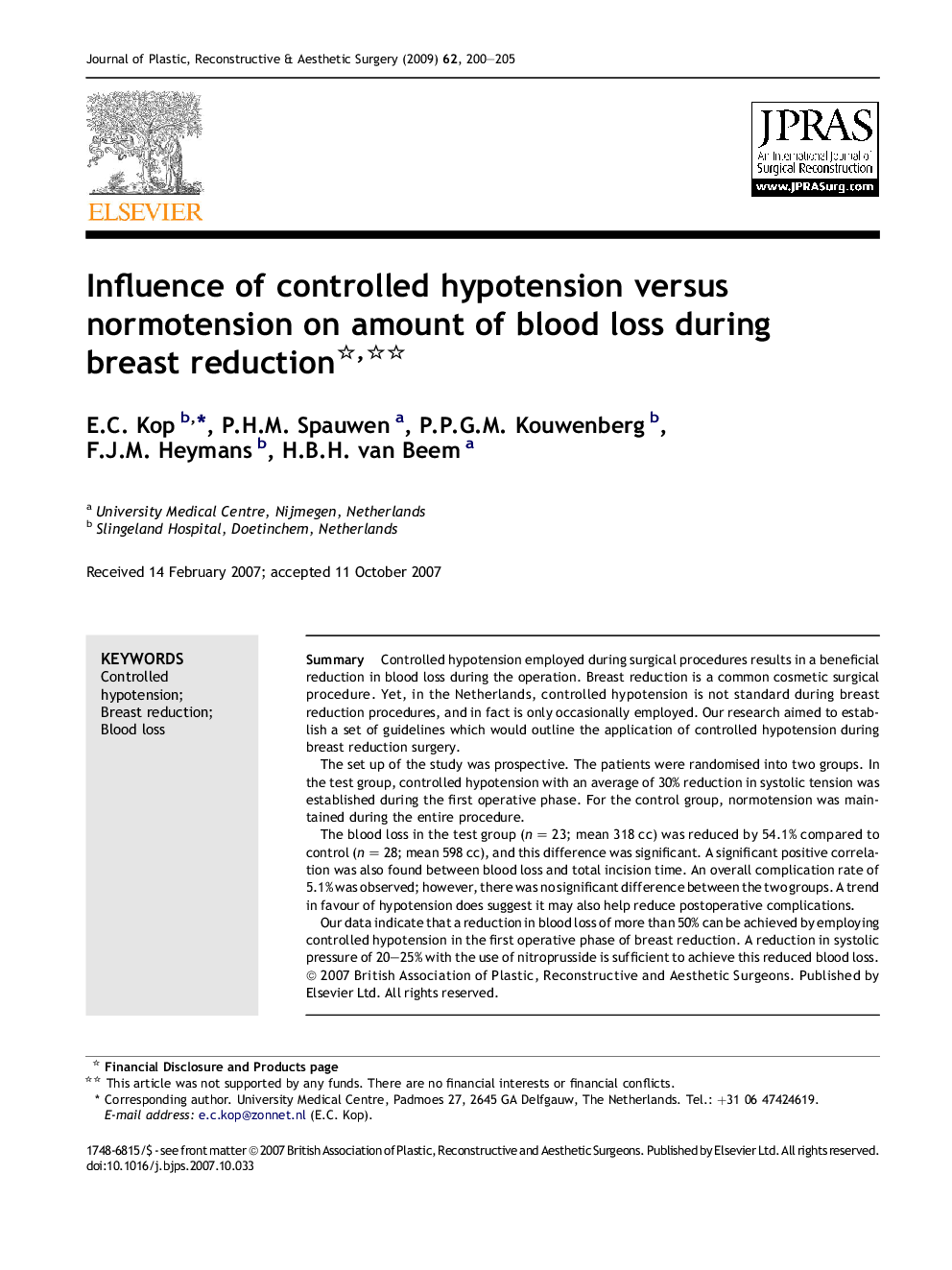| Article ID | Journal | Published Year | Pages | File Type |
|---|---|---|---|---|
| 4122106 | Journal of Plastic, Reconstructive & Aesthetic Surgery | 2009 | 6 Pages |
SummaryControlled hypotension employed during surgical procedures results in a beneficial reduction in blood loss during the operation. Breast reduction is a common cosmetic surgical procedure. Yet, in the Netherlands, controlled hypotension is not standard during breast reduction procedures, and in fact is only occasionally employed. Our research aimed to establish a set of guidelines which would outline the application of controlled hypotension during breast reduction surgery.The set up of the study was prospective. The patients were randomised into two groups. In the test group, controlled hypotension with an average of 30% reduction in systolic tension was established during the first operative phase. For the control group, normotension was maintained during the entire procedure.The blood loss in the test group (n = 23; mean 318 cc) was reduced by 54.1% compared to control (n = 28; mean 598 cc), and this difference was significant. A significant positive correlation was also found between blood loss and total incision time. An overall complication rate of 5.1% was observed; however, there was no significant difference between the two groups. A trend in favour of hypotension does suggest it may also help reduce postoperative complications.Our data indicate that a reduction in blood loss of more than 50% can be achieved by employing controlled hypotension in the first operative phase of breast reduction. A reduction in systolic pressure of 20–25% with the use of nitroprusside is sufficient to achieve this reduced blood loss.
